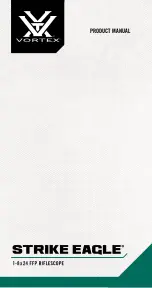
2
telescope tube, the north end of the polar axis should be displaced
to the West. If in the process of the star tracking the upper end of
the telescope tube is lifted, the north end of the polar axis should be
displaced to the East.
In 20-30 minutes of such observations one can set the polar axis so
that the star will remain on the cross-hairs for 0-5 minutes without
correction in declination.
After precise setting of the polar axis one can set the declination and
hour circles which must help to search the objects invisible with a naked
eye or even through the finderscope.
First of all one should set the hour circle which is fixed on the
polar axis. After a fine setting of the polar axis set the declination axis
horizontally. The horizontal setting should be checked with the aid
of a level. After setting of the axis one sets the hour circle so that “0” is
found against the index. Fix tile circle by means of screws.
For setting the declination circle fixed on the declination axis one
should find the declination of two-three bright stairs in the star catalogue
or make use of the declinations of the planets. With the help of the
finderscope one brings the star or the planet to the centre of the field of
view of the telescope at maximum magnification. After that one sets
the declination of the required star against the index. The circle is to
be fastened with a screw. Then one makes attempt to find the second
star by its declination. For this purpose one slackens the screws of the
axis brake and adjusts the telescope so that the declination of the star
to be sought is set on he declination circle. Fix the declination axis
and, by rotating the telescope tube slowly clockwise and counter-
clockwise around the polar axis, one brings the star to the centre of the
telescope field of view. After checking of the circle setting one tightens
it with a nut.
In order to avoid resetting of the polar axis and circles one should
choose a solid horizontal site. Best of all it is made of some concrete
of .5x.5 m size. The position of three supports of the telescope pier
should be marked on this site. The telescope is mounted according
to the marks on the concrete site.
6.2. Photographic observations
Photographing star fields is carried out with the use of the
telescope in Newtonian focus. To make it one should use a small size
35 mm camera which is set on focusing mechanism directly or with
the help of adapter (fig. 9). After setting of camera it is necessary to
balance the telescope.







































